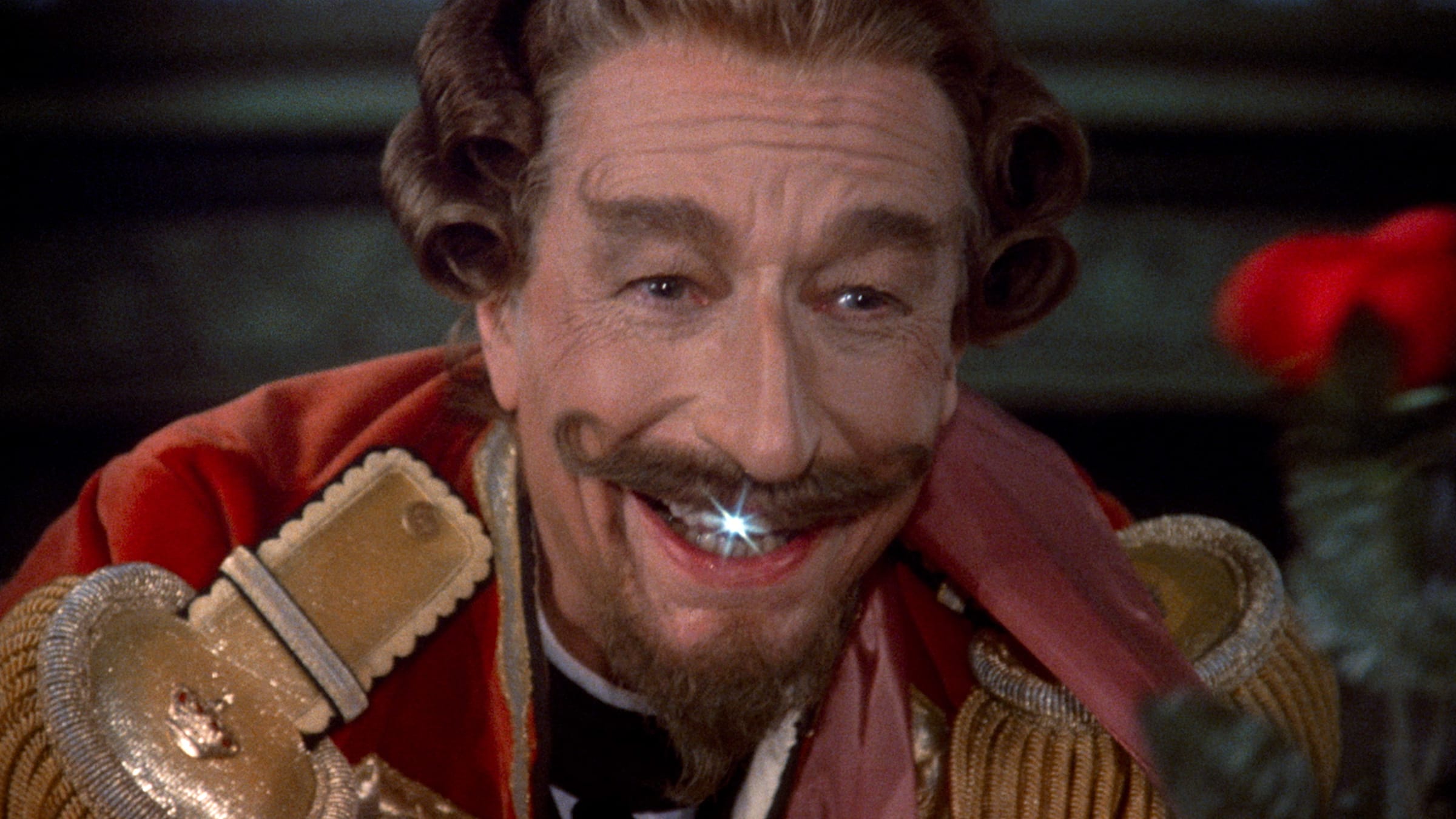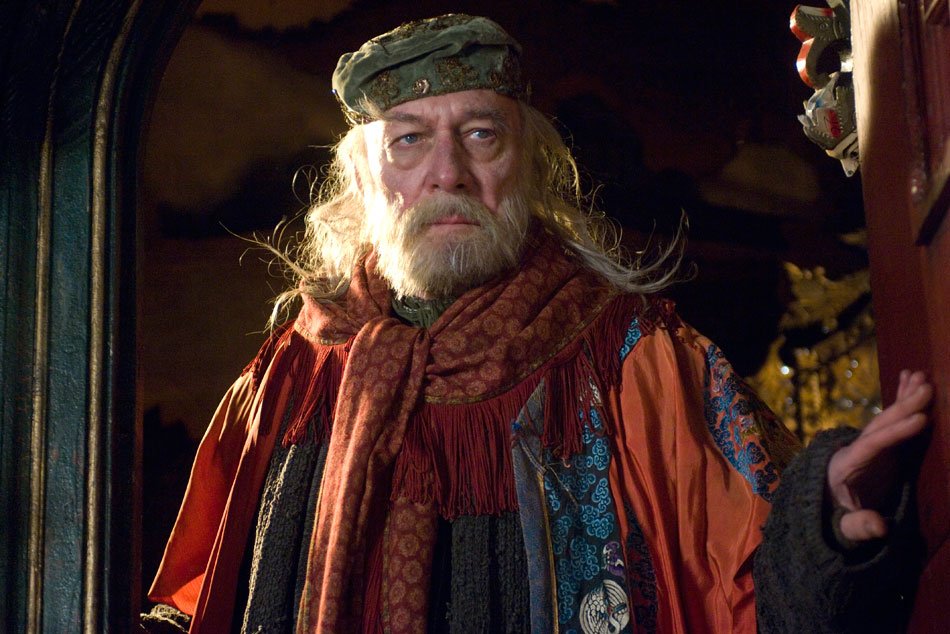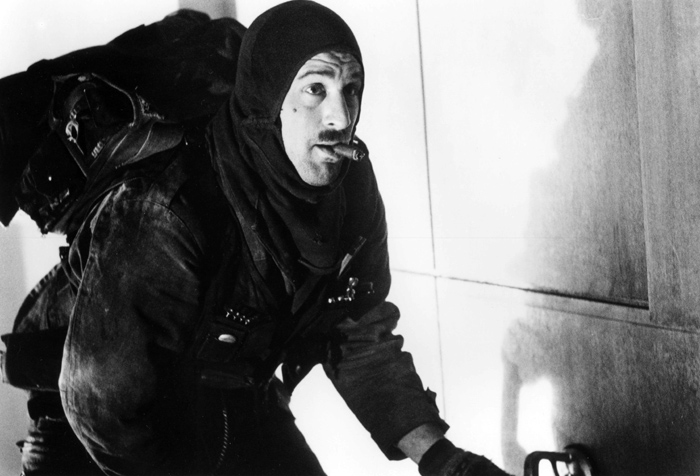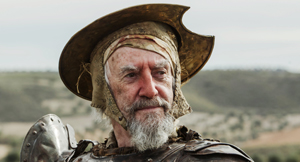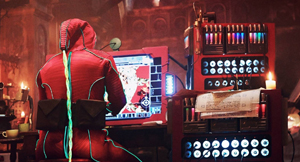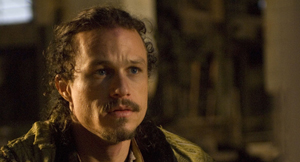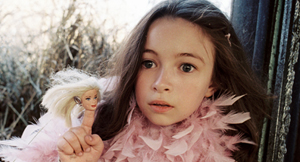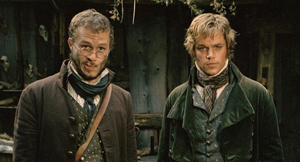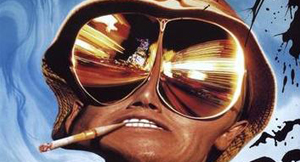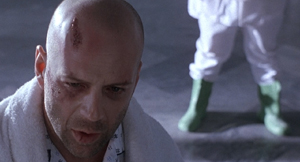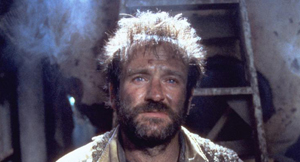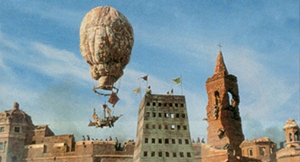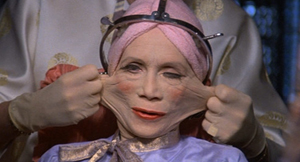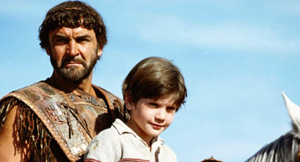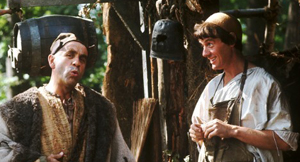LONDON – With The Imaginarium of Dr Parnassus having received premieres and special screenings around the world, director Terry Gilliam spoke to Dreams editor Phil Stubbs, reflecting on the project, speaking about design inspirations and narrative themes. Also on this page are design sketches of the Imaginarium itself, a horse-drawn wagon which opens out into a theatre.
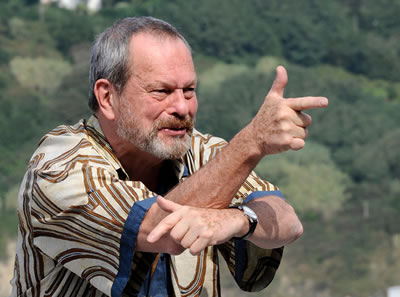
Phil Stubbs: Could you tell me a bit about the design of the Imaginarium wagon itself and what the influences were?
Terry Gilliam: It probably began with Pollock’s Toy Theatres in London. I remember when I first came here there was a shop – and it still is here. They do these Victorian toy theatres, which are cardboard cut-out ones and they have always intrigued me. In fact for the first go at it, I went down to the Museum of Childhood here in London. I knew they had several old ones there, so I just took some photographs and fiddled with them in Photoshop.
And the images on the outside?
We had books on Arcana and I’ve always loved that stuff. I don’t know what half of them mean, but we just started gathering them together and using them. So there’s snakes, devils, evil eyes, pentagrams. All sort of things – probably a mixture of every kind of arcane symbolism ever invented. It’s like Robert Fludd, all those guys. We read Dover Books, because you can steal from them. The medieval imagery and iconography is so good for the imagination. Trying to describe the world, trying to describe the cosmos, trying to put it down in neat orderly fashion, unlike reality. And it always seems to stick in ones mind more than reality does.
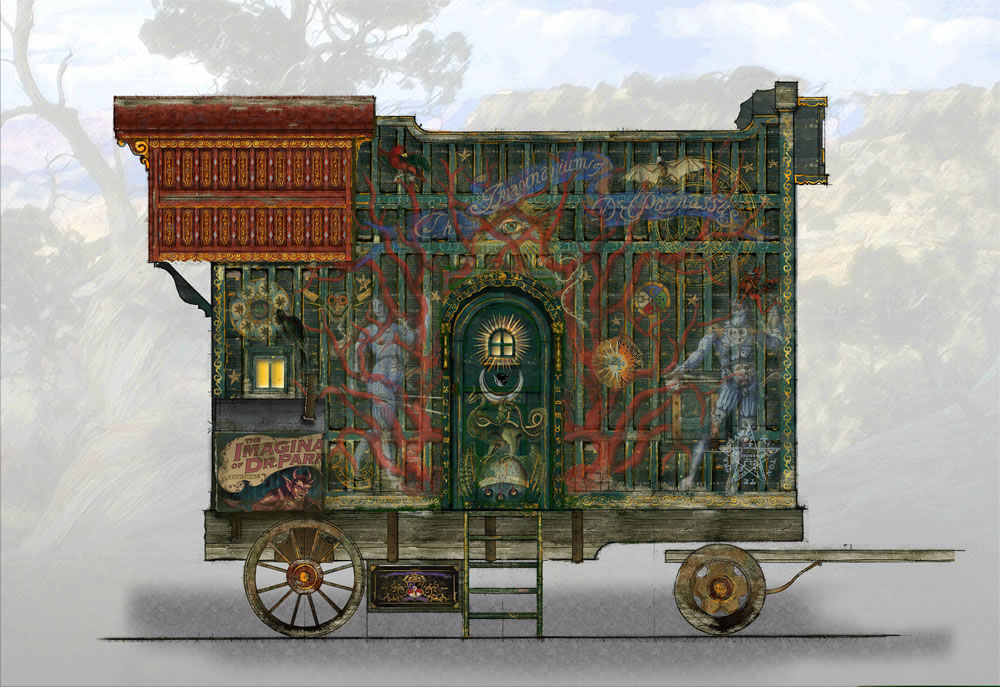
How did you wish London to look?
We started just looking at normal places and after a while, we thought: let’s go for just really striking bits of London, the tourist guide to London. We got Tower Bridge in there, Battersea Power Station, Leadenhall Market. The Tourist Board of London should give us some subsidy for what we are doing! There was no real look to it, we just wanted a city, a modern city, but the good thing about London, as a modern city, it’s an ancient city as well. It’s just life in London as usual.
The special effects within the film, the cgi, do they have a 2d or 3d look to them?
We’ve said it’s two and a half d. None of us wanted naturalistic – yet it’s supposed to be believable. They vary. One sequence based on Maxfield Parrish. Another is almost like Tex Avery, Chuck Jones. And Grant Wood – the American painter.
That’s the Ladder World
Yeah… that was Grant Wood. So we were looking at paintings, but you are supposed to believe your are in that place, but it’s not a naturalistic place.
It doesn’t conform to realism – but it has to be convincing
I thought we’d save money! It gave me the freedom that when we were in the Imaginarium, I could do different things. I didn’t want to get stuck, which is what happens now in most big special effects films, they try to recreate reality – it may be a very extreme, heightened, expensive-looking reality, but after a while you take it for granted, you don’t think about it.
The whole structure of Dr Parnassus was: each time you go in, you don’t know what you are going to experience. It gave me the freedom to create a world and then jump out of that world very quickly without having to spend the rest of film creating the same kind of atmosphere and space.
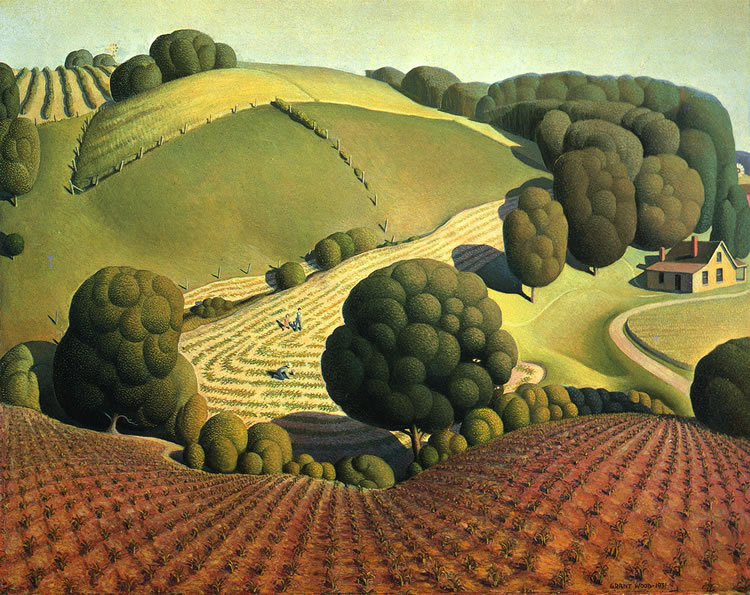 |
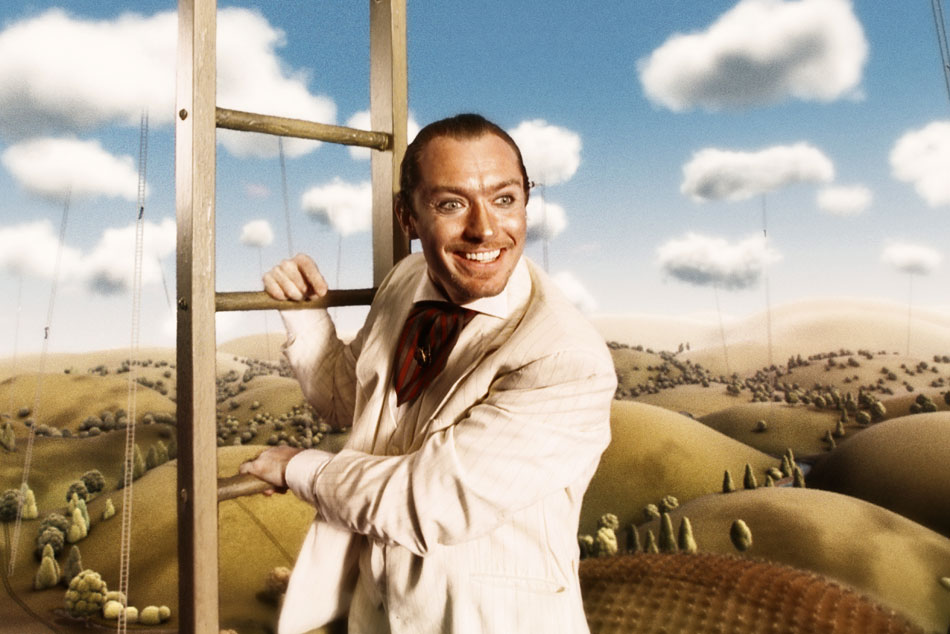 |
“Young Corn”, a painting by Grant Wood, was the influence for the landscape in the Ladder World |
Does it make it less convincing, does it give you extra problems when it isn’t a naturalistic background, to have those characters and believe they are in there with that background?
The backgrounds are much simpler than if you were doing something that is realistic and naturalistic. You don’t have to have the same kind of detail. And because they are painterly, I think you can get away with murder, in many cases – that’s the theory anyway. It’s a very funny thing, reading some of the reviews coming out of Cannes. Some of them said, “Fantastic looking!” Another said, “Just crap special effects”. I thought: what the fuck do they think we are doing? It’s just that they can’t even make the leap to understand that we are not trying to do what other people are doing with special effects. That’s what I find quite bizarre.
So they’d look at Ladder World and say: that doesn’t look like a real landscape!
Yeah, that doesn’t look realistic. That’s right, it doesn’t! That comes out as bad special effects. I find it absolutely astonishing, the way some people see what’s going on.
I think you’ve said in the past you were scared of using cgi
Not scared, I think, everybody else is doing it, it’s harder to control in some cases. It’s a more complex and expensive business is what it’s about. We were using a lot of physical models as well. The exterior of Dr Parnassus’s monastery was a model shot, so we’re mixing things all the time. The problem with cg, especially if you are trying to do realism, you’ve got to be really good at it. By not doing realism, it gives one more latitude, one can be freer.
The world that the shopper goes into – what were the influences behind that?
Just a shopper’s dream… women want shoes. Let’s do shoes. That’s where it started from. For whatever reason, I’d already done an illustration in the book we put together to help sell the film and I’d had these lily pads floating above a world. It’s a kind of an under-water and between-water world. The surface at the bottom is water, and there’s a surface up in the top which is water, but what is in between doesn’t seem to be water.
That was just the thing I was fiddling around with. You float a golden boot in at the end of it and on we go. It’s mixing things, I don’t know why I was more playful on this one. If we liked it, we just did it.
That’s certainly reminiscent of the Python days
Very much so, I always thought this was a compendium of what I’ve done before, including a lot of Python stuff.
And the hand creatures made it into the finished film
They are there but they don’t really… I’m less happy with those than I’d like to be. We didn’t have enough time – it all got a bit strange and elaborated. They are there, but not as good as the illustrations in my book.
And the jellyfish too
Yes, that worked, the jellyfish are good. The only thing that was in that book, the only thing that didn’t stay in the film was the whole sequence with Diego the kid with this War World, and the thousands of pianos and students – that’s out.
What does Diego see instead?
We see this wondrous world that we were originally going to have in there, which he destroys. But it’s much quicker, it’s a much shorter sequence, which came as a result of the first time we looked at the movie after we had assembled the whole thing, and had some rough stuff in the special effects. It was just too long to get into the film, and so I just truncated it. Hopefully we saved a lot of money, a lot of work, and it seems to work nicely. And I put a nice little gag in there.
Which was your favourite set?
Does this include a cg set?
Maybe in Vancouver?
What I really like is where Martin, the drunk, first goes through the mirror, and we are in this world of two dimensional trees that go on for ever. That’s the thing I really liked, that moment, because it was something I’d wanted to play around with for years. I finally got to play with it. Two dimensional trees in a three dimensional world.
And that’s how a toy theatre works
Yes, it was something years ago I was playing around with at the time of The Defective Detective. I love this idea of trying to make a three dimensional world composed of two dimensional objects.
The model unit – how long did you shoot?
It was a month. The funny thing is there is one landscape in the film that really worked out beautifully, which we didn’t have in the budget. It was literally thrown together with scraps of stuff on the last day and shot, and it’s extraordinary. It’s that moment when he realises he’s got a good crowd of people, he throws the stuff together. Bang off a few shots, you are onto a winner and that’s what’s happened on this one. Really nice moment when that happens. That’s the scene which takes place just after the dancing policemen.
How many model sets were built?
That’s what the problem was. We had… because we had this War World in there and this Piano Land. All of them were built, and all of them were shot, and then not used. But there was probably about six or seven major sets.
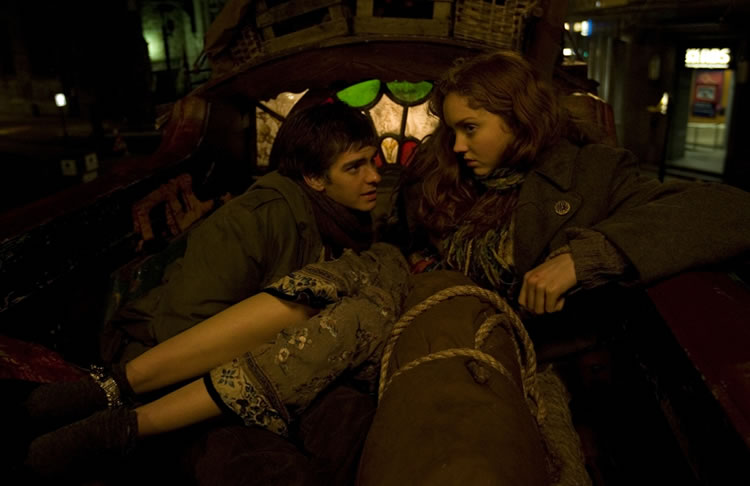 |
Andrew Garfield and Lily Cole on top of the Imaginarium |
You’ve experienced a lot of adversity in your career – in Development Hell, preproduction, shooting. A lot of that seems to be in the Parnassus script.
Well, only to the extent really that here’s Parnassus, who is trying to expand people’s imagination, and people aren’t paying attention any more. It’s not so much that there’s adversity in there. It’s more about the fact that he’s getting older and less successful at reaching a big audience.
There has been adversity within your projects, and would you say you thrive on it?
No – but things get my adrenaline going do help the creative process. The reality is I don’t think I’ve had it that much worse than most, probably the majority of filmmakers out there. It’s just been reported more. People I bump into it say: it was four and a half years getting that one going. It’s just very difficult, unless you happen to be one of the lucky Hollywood film directors, who plays the game in the studio world, and things move at a much quicker rate. My problem is trying to doing what I want to do and not just take the jobs that are offered. The work becomes harder. In fact you got problems on different films, they happen to a lot of people, I just invariably had a documentary crew there.
When you were starting this one, vs starting Quixote, did you feel in control of events?
Things were going quite nicely until Heath died. Simple as that. We were having a good time. We were working at a very fast rate. There were always the same old problems that always go on about location problems, such as getting to the location and lights on buildings that are supposed to be on. People have got to find the key to the building… all that stuff. That’s just the normal frustration of filmmaking. Other than that, everything was cracking along very nicely. And then Heath died.
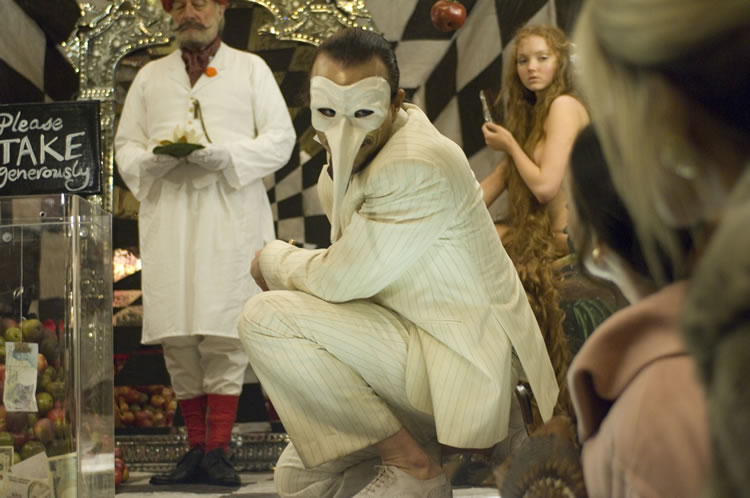 |
Tony (Heath Ledger) flirts with passers-by |
I spent time lurking around during the London shoot, and compared to Grimm and Tideland, it seemed to be a lot more difficult. With such a punishing schedule, things could easily have gone behind schedule.
That was part of the deal. We said we could do the London part in X number of days. The completion company didn’t think we could do it in that time, but we did it! We were really working hard and fast. It was going to be a very exhausting shoot from the beginning. We knew we had less time than ideally we would have liked, but we were doing it. Shooting in London – there are so many things that go wrong when you are in a city. But I didn’t think this one was anything worse than anything I have done. Tideland was easier because we were somewhere out in the country, dealing with a cast that was only a couple of people. The moment you get horses and wagons, and other bits and pieces, it’s going to be more complex.
Dr Parnassus – from finishing the script to starting shooting – it was a phenomenally short time to get off the ground, less than a year. That’s as a result of Amy Gilliam, Bill Vince and Samuel Hadida.
Bill was the one who was pushing it. He was marching forward. He and Amy were doing the work, but the problem was we didn’t have the money. In the end we got no money from the US. We were out there begging. I was always astonished that with Heath at the centre of the whole operation that they were not rushing forward with money. But they didn’t seem to understand it. It’s the same old thing: they said it’s not like something else I’ve done.
It’s very repetitive what goes on, it was incredibly difficult. It was really at the last minute that Sammy came in there, and managed to pull together European money and all that, which got us going. But it was a very close run thing. The outrageous thing on this whole baby was that we finally closed the deal with the bank and the completion bond company just four days before Heath died. That’s how extraordinary it is that this film exists.
You started shooting not knowing…
All that stuff is going on, all those things are going to close, but with deals between the lawyers… there’s always another clause, can you change that. A lot of films do this. You start without everything signed and sealed. There’s something blessed about the film, as much as it is cursed. If Heath had died before all the ink was dry, there would be no film. I’m sure it drove the money people absolutely crazy, when having just signed everything, and a few days later he was dead, and it created a horrible sense of panic. When that happened, it was just a frenzy. They couldn’t believe they had just signed away all these deals – the insurance and everything, and the star is dead.
I understand when news came through of Heath’s death, you started from wanting to end the project there and then, to finding a way of making it with three other actors.
I was ready to give up because I was exhausted at that point. Just totally dispirited with Heath dying. A lot of us were just completely crushed, we could barely function, but there were just too many people who said: let’s make this thing.
Nicola [Pecorini, DoP] and Amy in particular were just determined that this was going to get made. And I had to get off my ass and do something. And there was a lot of talking and throwing ideas around. I rejected the idea of a single person doing it and the fact that the character of Tony goes through the mirror three times, we said let three people do it. The other problem was of course, it was very unlikely we could get a major actor to come in, who was free and available for enough time to finish the film, it just doesn’t happen like that.
We were under incredible pressure to provide a solution within a matter of a week or so. It was my call to Johnny that really secured the money in the sense that it stopped it running away, until we sorted things out some more. I called Johnny, and he said whatever you want I’ll be there – and that was the beginning of the salvation of the film.
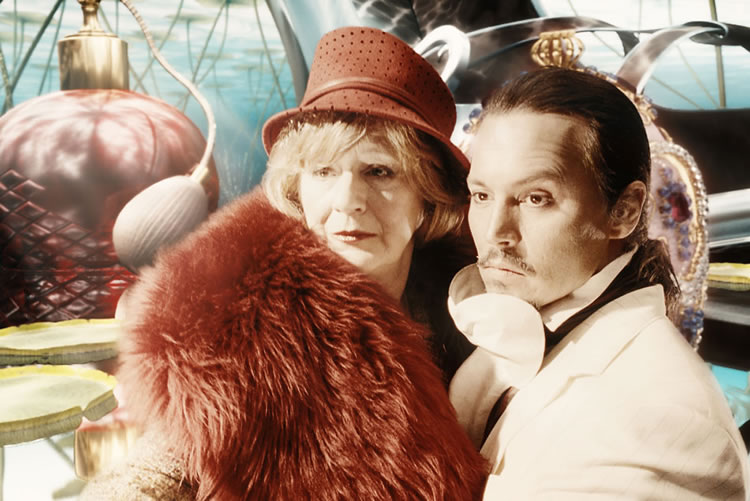 |
Tony (Johnny Depp) inside the Imaginarium with shopper (Maggie Steed) |
Nicola – he seems to be much more than just a DoP
He’s Sancho Panza. He’s such a source of energy and enthusiasm. He keeps me going when I’m collapsing, he just won’t stop.
Is Nicola back on for Quixote?
Yeah
With respect to Amy could you tell me about the role she has played on this film?
Hers has been the most painful and difficult. She was Bill Vince’s protégé. Amy has not produced a film before, simple as that. She was involved in this film Push, that Bill was producing. And she did a lot of work in helping getting cast together and pulling things here and there. And then on this one, suddenly she was thrust into a position of having to deal with situation a that was just terrible. Bill was incredibly ill for all this, dying of cancer in the course of the film. Amy was this force that pushed Bill onwards, fighting for things and refusing to let any of us give up. And then she got stuck when Bill died.
Bill died literally the week after the last bit of film rolled through the camera. Then she had to deal with the insurance claim and all the stuff that was going on. Quite extraordinary, it was a real baptism by fire and many other elements than fire: like metal! It was a really tough one, but it’s been learning on the job. The job has been so unlike any other film. Amy was just in the thick of it dealing with all the agents, all the lawyers of Johnny, Colin and Jude, and keeping it moving.
The length of the film, just over two hours
Just squeaked over two hours because the credits were so long. Shortest thing I’ve done in a long time.
The themes within the film – which are the themes within the film that resonate?
You’ve got a father/daughter relationship. This thing between “good” and “evil”, Parnassus and the Devil. The matter of choice in life. There’s the whole thing around Tony -a man who is very chameleon-like, who is probably quite a bad person, but believes everything he is doing is probably for the best.
Very much influenced by a certain politician?
Yes, with Charles [McKeown] and I, that was very much in our minds. Young Tony.
Maybe the real life Tony is going to get his come-uppance?
He’s got to swear an oath in public, that’s going to be a very interesting moment.
And he might get the finger pointed at him as well
Yeah, that’s really good. Hopefully everything comes around.
The magic nature of the Imaginarium is never in doubt in the movie, whereas in other movies you’ve done there’s always been a rational character who doubts the magic nature. Did you ever consider having that as an element of the film?
No, I just wanted it to be what it was – you go through the mirror and there’s just this other world there. I suppose I’ve always loved fairgrounds, live shows and circuses. They all do that to me. You go through the tent and, my God, you are in another place.
When we were working on the film there is always this idea in my head that Parnassus might be a complete charlatan but, it’s pretty clear it all happens in there, and the Imaginarium is a genuine thing.
There’s plenty of ambiguity within the script, but it never seems an ambiguity that there is a magic wagon
There’s a scene between Anton and Tony where Heath asks if you can control people’s minds, why doesn’t he rule the world, and he’s talking about the mirror and what it is. We actually never explain it, we just let Anton avoid explaining it. It’s a mystery. It goes on…
Finally, in the film, you seem to suggest the biggest sin is to go for the easy life
Funny that, isn’t it. I think so, there’s something about an easy life. I think we’re here for a brief period, and I think we should all be a bit active while we are here. That doesn’t make it easy. It doesn’t mean that life is a misery, but it should be a pretty active, involved life, it seems to me.


